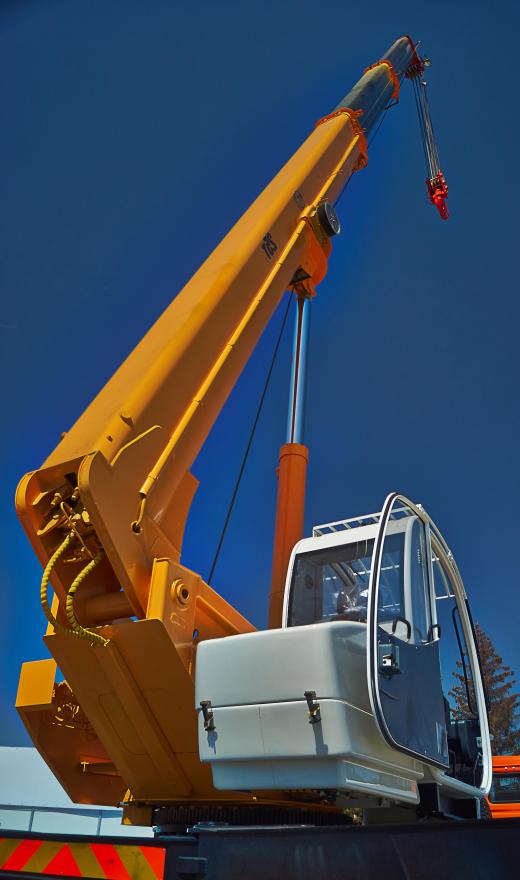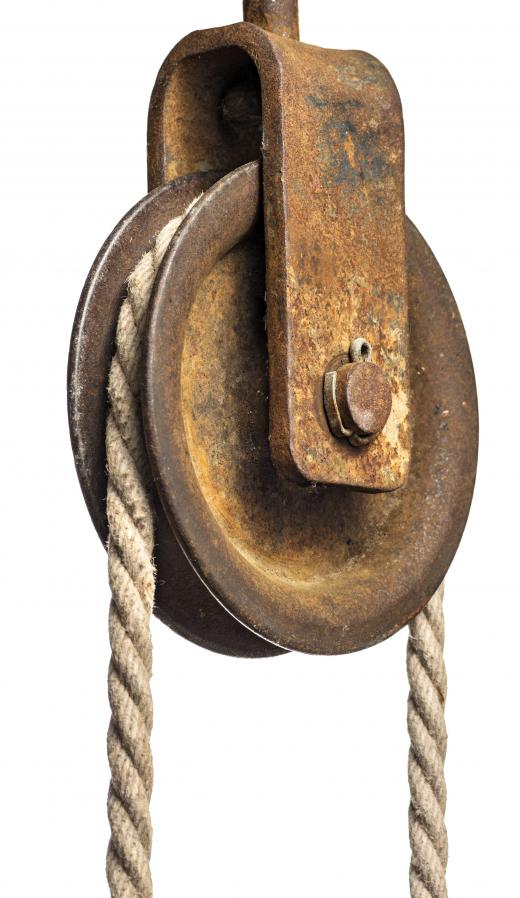A compound pulley system uses a fixed pulley and a movable pulley so that an operator is able to move a heavy load with less physical effort. The multiple pulley system is able to multiply the strength and pulling power of the winch, lowering the strain on the winch and the object being pulled. Such a system can be found on many heavy lifting cranes and overhead winching machines. The block and tackle is also a type of compound system.
In the most simple terms, the weight reduction of a given load is reduced by the number of pulleys used in a compound pulley system. With this in mind, a system using four pulleys to lift an object will feel like the user is actually lifting one-fourth of the item's weight. This is why a crane is able to operate with a smaller cable and winch, saving valuable space on the machine as well as allowing the crane to be physically smaller and lighter, while still remaining operational and able to lift greater amounts of weight.

The compound system also affects the ability to pull. When using a winch to recover a vehicle that is stuck in deep mud or has become trapped in a steep ditch, for example, the winch operator will often use a compound pulley system to help ease the vehicle out while exerting minimal strain on the winch and cable. By using this type of system, a much smaller winch can often do the job of a much larger device while remaining cool and drawing much less power.

On battery-powered winch motors, this means extended pulling power from a single battery. It also means less chance of damaging the winch motor due to over-heating of the electrical circuits from straining and stressing the motor. With a hydraulic winch motor, there is much less chance of breaking a fluid line or damaging the pump due to a difficult pull. The pull will require a little more time when using a compound system, although most users agree that the benefits outweigh the problems and repairs. The system can assist with heavy tasks and allow work to be completed with much less strain placed upon any system.
